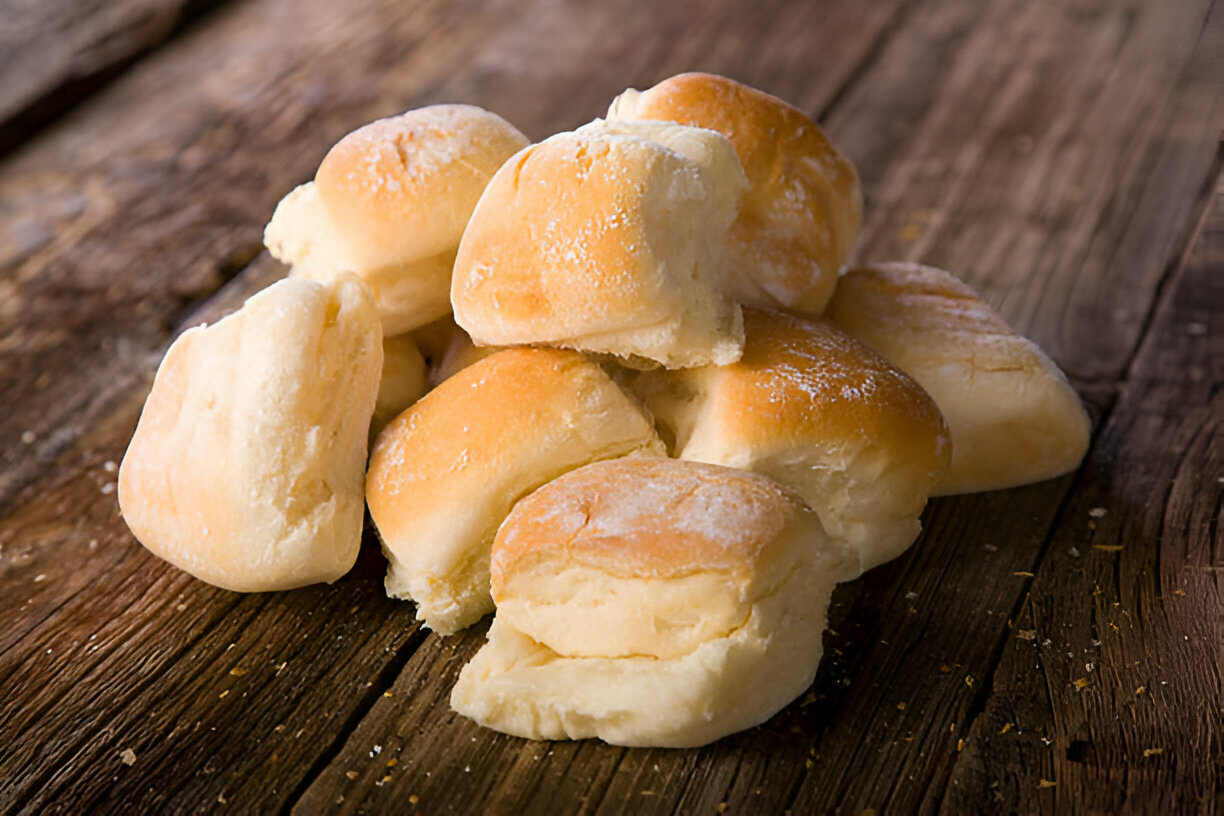
French Bread Rolls Recipe
Soft, golden, and wonderfully fluffy, these French Bread Rolls bring bakery-quality warmth to your kitchen. Perfect for any meal, they’re simple to make yet incredibly satisfying to pull apart and enjoy fresh.
Pin
Print
Save
Servings: 12 rolls
Calories: 190kcal
Ingredients
- 1 teaspoon Salt
- 2 tablespoons Canola oil vegetable oil, or other neutral-flavored oil (olive oil can also be used)
- 1 tablespoon Instant or active dry yeast see note
- 2 tablespoons Granulated sugar or honey
- 1 ½ cups Warm water
- 3 ½ to 4 cups 497 to 569 g All-purpose or bread flour, more or less (see note)
Instructions
- In the bowl of a stand mixer fitted with a dough hook, or in a large bowl if mixing by hand, combine the warm water, yeast, sugar, oil, salt, and 2 cups of the flour. Begin mixing the ingredients together, then gradually add the remaining flour, a little at a time, until the dough pulls cleanly away from the sides of the bowl.
- Continue kneading the dough for 4–5 minutes in the stand mixer or 7–9 minutes by hand. The dough should develop into a soft, pliable mass that feels smooth but still retains a slight tackiness. Pause kneading after a few minutes to pinch off a small portion of dough; it should roll into a ball with minimal sticking. If the dough clings excessively to your fingers, sprinkle in a bit more flour as needed.
- Transfer the dough to a lightly greased bowl, turning it once to coat the surface, and cover it loosely. Allow the dough to rise in a warm, draft-free place until it has doubled in size, approximately 1–2 hours.
- Gently deflate the dough and tip it onto a lightly greased work surface. Divide it into 12 equal portions, aiming for about 2.75 ounces per piece. Shape each piece into a smooth ball, ensuring the seams are tucked underneath.
- Arrange the dough balls in a lightly greased 9x13-inch baking dish or on a large, rimmed baking sheet lined with parchment paper or lightly oiled. Space the rolls about ½ to 1 inch apart to allow room for expansion during proofing.
- Cover the rolls loosely with lightly greased plastic wrap, allowing the wrap to drape over the sides without anchoring it beneath the tray. This prevents the rolls from being compressed as they rise. Let the rolls proof until noticeably puffy and doubled in size, about 45 minutes to 1 hour.
- Meanwhile, preheat the oven to 400°F (200°C). Bake the rolls for 15–17 minutes, or until they are evenly golden brown and fully baked through.
- As soon as the rolls come out of the oven, brush their tops generously with melted butter to add a rich, glossy finish. Allow to cool slightly before serving warm.
Notes
-
Yeast:
- Originally, active dry yeast needed to be dissolved in water first, but today it’s formulated with smaller particles and can be mixed directly into the dough.
- Use 1 tablespoon of yeast if measuring from a bulk package.
- If using yeast packets (each packet contains 2 ¼ teaspoons), one packet is enough for this recipe.
- If using a packet instead of a full tablespoon, expect the dough to take slightly longer to rise.
-
Tips:
- Avoid over-flouring or under-flouring the dough to maintain the perfect texture.
- Follow the guidance given in the recipe for flour adjustments.
- A simple yeast tutorial is available for extra help, and the step-by-step photos below the recipe provide helpful visual cues.
-
Tutorial for Shaping Rolls:
- To achieve evenly shaped, round rolls, refer to the video tutorial (at minute marker 2:20).
-
Whole Wheat Version:
- For a fully whole wheat option, try the fluffy whole wheat French bread roll recipe.
- Alternatively, substitute part of the all-purpose flour with whole wheat flour in this recipe for a heartier roll.
-
Freezable Option:
- These rolls freeze beautifully once baked and cooled.
- Place them in a zipper-lock freezer bag and store them in the freezer.
- To reheat, either let them thaw at room temperature for a few hours or microwave from frozen for 2–3 minutes at 70% power.
Nutrition
Calories: 190kcal
Did you make this recipe?Want more delicious recipes like this? Follow us on Pinterest for daily inspiration! Click here to Follow me on Pinterest @Sevten